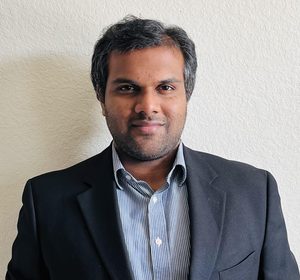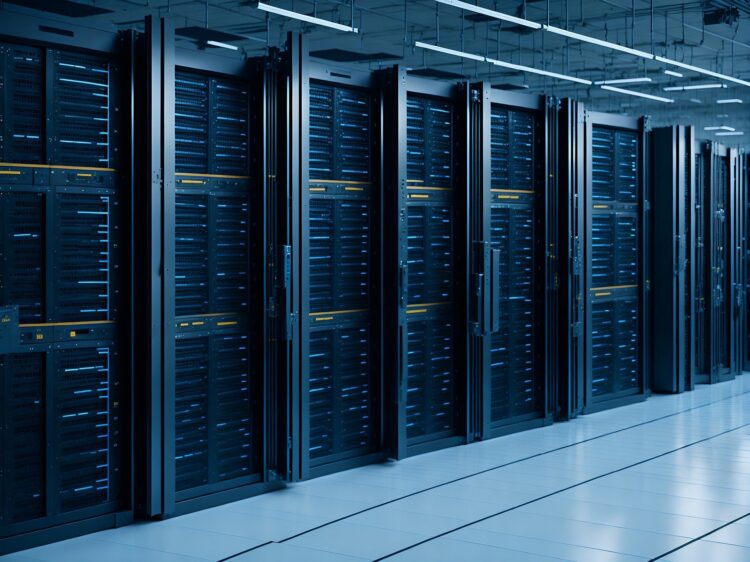Data centers are the backbone of the modern digital economy, powering everything from smartphone apps and streaming services to stock market operations and financial services. As the AI revolution accelerates, the demand for high-performance computing has skyrocketed, placing unprecedented pressure on data center infrastructure.
 Siddharth Soundara Rajan, Senior Technical Program Manager at Amazon Web Services, is at the forefront of addressing this challenge. His work focuses on developing and implementing cutting-edge solutions to strengthen the electrical infrastructure of data centers, ensuring they can meet the ever-growing demand for computing power.
Siddharth Soundara Rajan, Senior Technical Program Manager at Amazon Web Services, is at the forefront of addressing this challenge. His work focuses on developing and implementing cutting-edge solutions to strengthen the electrical infrastructure of data centers, ensuring they can meet the ever-growing demand for computing power.
In an interview with TechBriefly, Siddharth shared his journey in the power and energy industry, the critical need for robust electrical infrastructure, and his vision for meeting the expanding energy needs of data centers in the AI-driven future.
A passion for the electric power industry and emerging technologies
Siddharth’s passion for the electric power industry was ignited when he recognized the critical role that electrical infrastructure plays in shaping modern life. From powering essential services to enabling cutting-edge innovations, the industry has shaped the narrative of the modern era. His fascination grew as he delved deeper into the challenges and opportunities within the field, particularly the need for resilient, reliable, and sustainable power systems that could support technological advancements and societal growth.
Siddharth emphasizes the need for constant transformations and breakthroughs in power systems. This includes integrating renewable energy, enhancing grid reliability, and modernizing critical infrastructure to drive innovation, improve efficiency, and create a lasting impact across multiple sectors. Specific to the data center industry, Siddharth states, “We are only at the dawn of the AI revolution. The electrical infrastructure is on the verge of a once-in-a-generation transformation to meet the growing energy demands of AI.”
Data centers: The backbone powering the AI revolution
Siddharth highlights the role of data centers in this AI transformation – “Behind the scenes of the AI technological marvel lies the backbone that makes it all possible – Datacenters”. AI systems require enormous amounts of data right from machine learning algorithms to neural networks. Data centers provide the high-performance computing resources and infrastructure to handle this vast data processing.
“One of the crucial aspects for AI’s exponential growth is the need for scalability”. Data centers offer a flexible and scalable environment to meet the increasing demand for storage, computing power, and network capacity.
Real-time AI applications need instantaneous processing. Siddharth adds that edge data centers, ensure low-latency connections, enabling AI systems to deliver real-time results. Most AI applications are deployed in cloud environments hosted in data centers. Leading Cloud platforms, like AWS, provide the tools and infrastructure that AI developers need to build, train, and deploy their models seamlessly.
Energy constraints in the data center industry
Power unavailability in many markets has become a significant challenge for data center hyperscalers, as they strive to meet the growing demand for reliable and scalable infrastructure. Siddharth indicates that this issue primarily stems from two key factors: limitations in interconnecting power grids via transmission lines and insufficient generation capacity near major load centers. These constraints hinder the ability to deliver consistent power to support the growth of new data center facilities.
Compounding the challenge is the heavy reliance on traditional fossil-fueled power generation, which remains the dominant source of electricity in many regions. “This dependency not only exacerbates grid limitations but also creates a significant barrier to achieving hyperscalers’ ambitious sustainability and carbon-neutrality goals”. As data centers expand and energy demands soar, addressing these power supply issues is critical for ensuring resilience, efficiency, and environmental responsibility in the digital economy.
In addition to power constraints, Siddharth emphasizes that hyperscalers face significant challenges in managing supply chain complexities. The electrical infrastructure of data centers relies on a range of critical equipment, including generators, uninterruptible power supplies (UPS), medium voltage transformers, switchgear, and power distribution cabinets. Delays or shortages in procuring these essential components can disrupt operations and stall growth. Siddharth notes, “Building and navigating a robust value chain is critical for the continued growth of the data center industry.” Establishing an agile supply chain is imperative not only to address the current demands but also to support the rapid scaling required in an increasingly digital and connected world.
Meeting the energy demands of AI data centers
AI data centers are driving the evolution of power density, revolutionizing the way facilities are designed, powered, and cooled. Siddharth highlights that these centers demand significantly more processing power than traditional data centers to support complex workloads such as training large language models, deep learning algorithms, and generative AI applications.
This requirement results in a substantial increase in rack power density, often reaching hundreds of kilowatts per rack. Accommodating these levels necessitates a complete rethinking of the electrical topology and the critical equipment powering these racks. Higher power ratings are essential for components like switchgear, breakers, transformers, backup generators, and power distribution cabinets.
Siddharth states, “Meeting this transformation requires innovation in the product lines of critical equipment and advanced real-time monitoring of data center infrastructure.” This transition highlights the importance of innovative solutions and infrastructure improvements in the fast-changing landscape of AI data centers.
Vision for powering the future
Siddharth’s approach to shaping the future of electrical infrastructure in data centers extends beyond simply meeting operational needs—it’s about pioneering advancements and unlocking new possibilities in technology. With sustainability as a central focus, he envisions that clean, carbon-free energy sources will increasingly meet the growing energy demand for data centers. Solar and wind energy are set to play pivotal roles in this transition.
Siddharth explains that while solar and wind are intermittent by nature, the development of large-scale energy storage systems (ESS) has been a game-changer, enabling broader adoption of these renewable sources. ESS offers critical benefits such as grid stabilization, load shifting for optimized renewable energy use, and frequency regulation. Additionally, ESS empowers behind-the-meter microgrid solutions, granting data centers greater energy independence from traditional power grids.
There is also a growing interest among hyperscalers in utilizing nuclear energy as a carbon-free power source, particularly for AI-driven data centers with high energy demands. Nuclear energy offers a reliable and consistent carbon-free alternative to complement renewables.
Siddharth concludes, “The future of the data center industry shines bright, but innovative and transformative solutions are required to keep it powered.” His vision underscores the importance of forward-thinking strategies to ensure the industry’s growth remains sustainable and resilient.
Note – The above reflects Siddharth’s personal perspective and does not represent the views or opinions of any organization.





